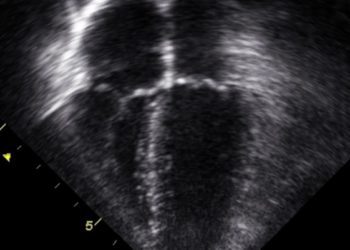The 2 Minute Medicine Podcast Episode 15
May 18th 2023
Welcome to the 2 Minute Medicine Podcast, summarizing the latest medical studies, curated and written by practicing physicians. On this podcast, twice a month, we cover the latest in healthcare news and research evidence.
Our episode is live!
Episode Description
We begin this episode by discussing our article of the week which comes from the New England Journal of Medicine and is entitled “Long-Term Health Consequences After Ovarian Removal at Benign Hysterectomy: A Nationwide Cohort Study.” In the second half of our episode, we bring a medical eye to popular events. First, we take a closer look at how the recommendations around breast cancer screening are changing as a result of emerging evidence on breast cancer risk in young people. Next, we discuss what the end of COVID-19’s emergency status means, the impact of Canadian Wildfires on the health of nearby residents and in honor of National Nurses Week May 6-12, we celebrate the important work that nurses do and draw attention to the current nursing shortage.
Click here to listen to this episode on Apple podcast
Click here to listen to this episode on Spotify
Transcript
[Deepti] Welcome to the 2 Minute Medicine Podcast, summarizing the latest medical studies, curated and written by practicing physicians.
For our full suite of daily medical study summaries and updates written by practicing doctors, please visit our website at 2minutemedicine.com to start reading new daily content right now, for free. On this podcast, twice a month, we cover the latest in health care news and research evidence. We are your hosts Deepti and Andrew. On today’s episode, we’ll start off by discussing our two articles of the week. In the second half of the episode, we will look at health issues that have arisen in popular media.
[Andrew] Our first article of the week comes from the Annals of Internal Medicine and is entitled “Long-Term Health Consequences After Ovarian Removal at Benign Hysterectomy: A Nationwide Cohort Study.”
Bilateral salpingo-oophorectomy (or BSO) during benign hysterectomy has been shown to decrease the risk of ovarian cancer. Thus, women at high risk for this type of cancer will have a substantial survival benefit from undergoing BSO. However, there is a gap in knowledge as to understanding the true health consequences of ovarian removal. For example, in premenopausal women, BSO leads to an abrupt decline in endogenous sex hormone production. Conversely, after menopause, it affects androgen levels.
This population-based cohort study examined women in Denmark aged 20 years or older. Patients who had benign hysterectomies between January 1977 and December 2018 at age 20 years or older and were living in Denmark were eligible for the study. Patients who had salpingo-oophorectomy or oophorectomy (uni- or bilateral) before hysterectomy, a family history of cancer before or at hysterectomy, unilateral salpingo-oophorectomy or oophorectomy at hysterectomy, a diagnosis of benign ovarian tumors at hysterectomy, or less than one year of potential follow-up were excluded from the study.
The primary outcome was overall cancer (except for nonmelanoma skin cancer), cardiovascular disease, and all-cause mortality. Outcomes in the primary analysis were assessed via Kaplan-Meier estimates and Aalen-Johansen estimates. Based on the primary analysis, women with BSO who were younger than 45 years at surgery had a higher 10-year cumulative risk for hospitalization for CVD (risk difference [RD], 1.19%; 95% Confidence Interval [CI], 0.09 to 2.43%) compared to women without BSO. Women with BSO also had a higher 10-year cumulative risk for cancer for ages 45 to 54 years (RD, 0.73%; 95%CI, 0.05 to 1.38%), 55 to 64 years (RD, 1.92%; 95%CI, 0.69 to 3.25%), and 65 years or older (RD, 2.54%; 95%CI, 0.91 to 4.25%). Compared to women without BSO, women between 45 and 54 years of age with BSO also experienced significantly higher 10-year mortality (RD, 0.79%; 95%CI, 0.27 to 1.30%).
In summary, this study demonstrates that conserving ovaries in premenopausal women without high risk for ovarian cancer is preferred given the lack of significant survival or health benefit in BSO. This study was limited by using age as a proxy for menopausal status. Nevertheless, these study’s findings are significant, as they demonstrate that compared with women without BSO, women who received BSO had no significant survival benefit for the premenopausal group.
[Andrew] Now we’ll start off by talking about the Scan by 2 Minute Medicine®, a pop-culture medical newsletter and exclusive benefit for 2 Minute Medicine Plus subscribers.
[Andrew] The Story: The recommendations around breast cancer screening are changing as a result of emerging evidence on breast cancer risk in young people. The U.S. Preventive Task Force—the body that reviews evidence and develops recommendations on disease prevention—recently updated their guidance on breast cancer screening and now advises women to begin receiving biennial mammograms at age 40, rather than age 50. This guideline change comes as a result of increasing breast cancer diagnoses in people under the age of 50.
People usually associate cancer with increasing age, but more and more research is showing an increase in diagnosis among young adults. Colon cancer has recently received attention for its increased prevalence in young people. But with a 2% increase per year from 2015 to 2019 in diagnoses in patients in their 40s, breast cancer is the latest disease to garner concern about its increased prevalence in young adults. The issue is not only that breast cancer is becoming more prevalent in younger populations, but also that the burden of disease is not distributed evenly. Research shows that younger Black women who are diagnosed with breast cancer have significantly worse survival outcomes than White women with the same diagnosis. This is in part explained by a higher proportion of Black women being diagnosed with aggressive forms of the disease, such as triple-negative breast cancer. But disparities in access to screening and treatment may also contribute to these differences. Improving screening measures, as with the new guidelines, and catching cancers early is one way to improve the survival outcomes in those diagnosed. The importance of Screening and Overdiagnosis is also important to take into consideration
[Deepti] Absolutely. Although the changes in mammogram guidelines are likely to find cancers earlier in young people, screening measures for cancers and other diseases come with inherent risks, such as overdiagnosis. Overdiagnosisoccurs when a medical condition that would not have caused any harm is diagnosed and treated. When this happens, the patient is subjected to treatment and procedures that is often more harmful than the disease itself. Overdiagnosis is an issue of concern with many diseases. For example, estimates suggest that the overdiagnosis and overtreatment of prostate cancer can be as high as over 60%. Overdiagnosis remains a concern in breast cancer as well, although it is hard to quantify and may be overestimated. Therefore, whenever screening guidelines are expanded, as in the case of the recent breast cancer recommendations, the need to detect cancers early must be balanced by the risk of overdiagnosis. Rest assured that organizations like the U.S. Preventive Task Force take all of these factors into consideration when updating existing screening guidelines.
Now let’s take a closer look at COVID-19. Has the pandemic really come to an end?
[Deepti] On May 5th, the World Health Organization (WHO) announced that COVID-19 is no longer considered a global health emergency. The news comes after evidence of decreasing trends in COVID-19 deaths, hospitalizations, and intensive care unit admissions. While restrictions have been loosening gradually over the past three years, the declaration from the WHO signals, for many, a formal end to the global pandemic. The U.S followed suit, declaring an end to the COVID-19 emergency status on May 11th. But what does all of this mean?
The WHO ensured that the downgrade in emergency status should not signal to countries to forget about COVID-19 altogether. The virus remains a “global health threat” according to the global health governing body. As we have seen in the past, the virus has the ability to mutate into novel and more dangerous strains. If this were to happen again, as we saw with the Omicron variant, it could trigger further precautions. However, the WHO suggests that countries should focus on long-term management of COVID-19, rather than emergency measures.
[Andrew] Exactly. And, practically speaking, the end of COVID-19’s emergency status has implications on vaccines, testing, and other healthcare measures. Public health data collection in the U.S is expected to end, and vaccine reporting is no longer required, which will make tracking cases and vaccine effectiveness harder. Although COVID-19 tests will no longer be free, safeguards are in place to ensure that vaccines will remain free for uninsured Americans through to December 2024. Many telehealth flexibilities will also remain in place until the end of 2024, while others, such as mental health services via telemedicine remain permanent. Although the pandemic has come to an end, its impact on the healthcare system will remain. Next, let’s take a look at the recent Canadian Wildfires
[Andrew] The province of Alberta, Canada recently declared a public emergency as a result of ongoing wildfires, forcing over 30,000 people to evacuate. As a result of global warming, wildfires are becoming increasingly common. In addition to immediate safety risks, these natural disasters can cause harm to both mental and physical health.
According to research, wildfires are the culprit of thousands of premature deaths every year. The deadly effects of wildfires are due, in part, to the toxic concoction of chemicals and substances, including carbon monoxide and soot, which are found in wildfire smoke. Most notably, wildfire smoke can have implications on the respiratory system, by exacerbating asthma and allergies, and on the cardiovascular system, by initiating heart attacks and strokes. However, wildfire smoke exposure has been associated with several other adverse health outcomes, including an increased risk of cancer, preterm birth, fungal infections, and poor mental health.
[Deepti] That’s right. Wildfire events are associated with increased emergency room visits, for things such as headaches, respiratory illness, cardiovascular events, and more. Listening to emergency officials in the event of a wildfire and limiting exposure to smoke can help reduce the risk of negative health effects.
Last but not least, let’s take a look at national nurses week!
[Deepti] Last week was National Nurses Week—a time to celebrate nurses and all they do. Nurses are the backbone of the healthcare system, providing care and support to patients at every point along their healthcare journey. Largely outnumbering doctors, there are over 3 million nurses in the U.S today. Despite this large number, the country is facing a significant nursing shortage.
Pre-pandemic estimates suggest that there was a global shortage of nurses and midwives of about 30 million. Since the pandemic, the shortage has only gotten worse and current estimates suggest that over 1 million new nurses will be needed in the U.S by the year 2030. Factors such as high turnover, low wages, burnout, and the ageing population have contributed to a greater demand for nurses and the current deficit.
[Andrew] Absolutely. The nursing shortage represents a significant problem, which can lead to longer wait times, overcrowding in healthcare centers, decreased quality of care, and increased medical errors. Celebrating the important work of nurses and drawing attention to the current nursing shortage can help facilitate the development of innovative solutions for solving the nursing shortage crisis.
We’d like to acknowledge the following members of our team for their contributions to this week’s episode
- Ashley Jackson
- David Xiang
- Kiera Liblik
[Andrew] Thank you for joining us today for this episode of the 2 Minute Medicine Podcast. New episodes come out every other week and all of our content has been curated and written by practicing physicians.
Please head to our website at 2minutemedicine.com to learn more and to access all of our content including medical study summaries, visual abstracts, excerpts from our Classics book series which is available on Amazon, and The Scan, which is our medical newsletter.
Thank you so much once again. To make sure that you don’t miss any of our content please subscribe and follow us on Twitter or Instagram @2MinMed
©2023 2 Minute Medicine, Inc. All rights reserved. No works may be reproduced without expressed written consent from 2 Minute Medicine, Inc. Inquire about licensing here. No article should be construed as medical advice and is not intended as such by the authors or by 2 Minute Medicine, Inc.









